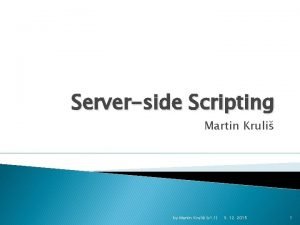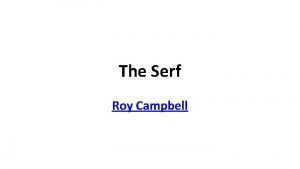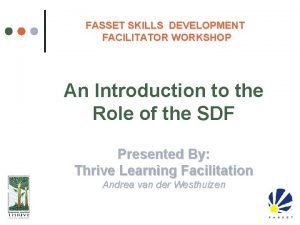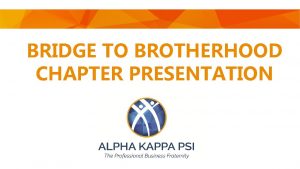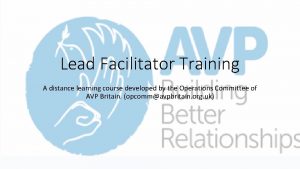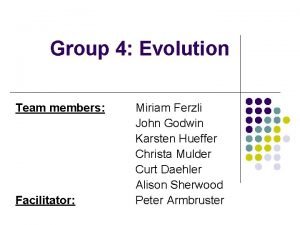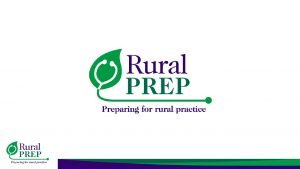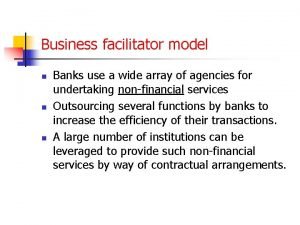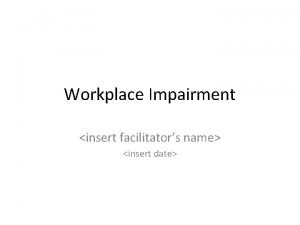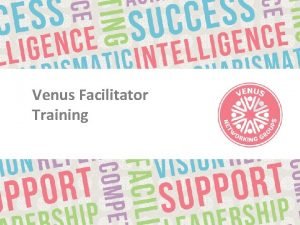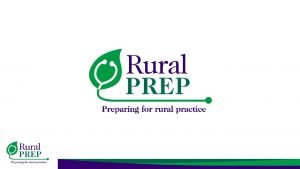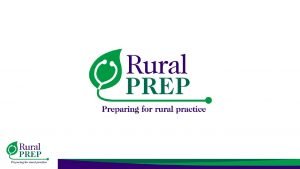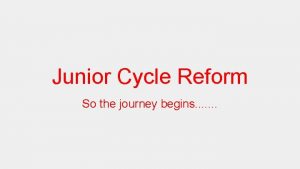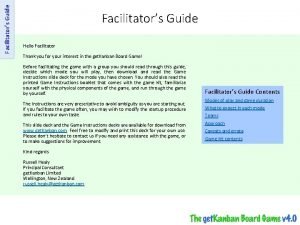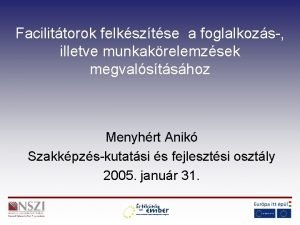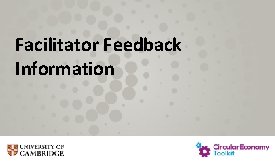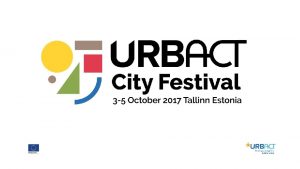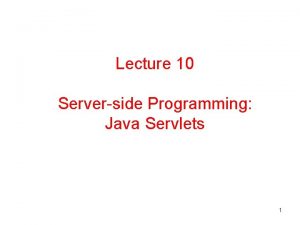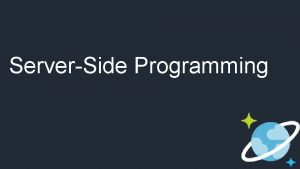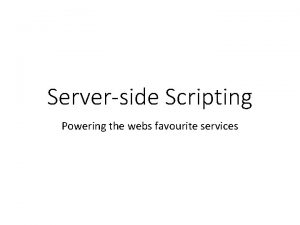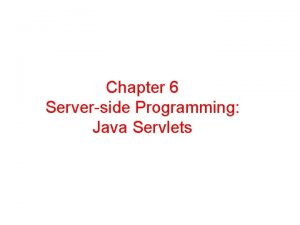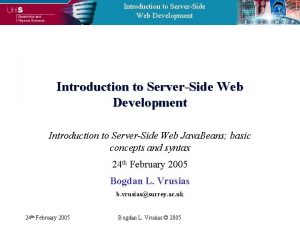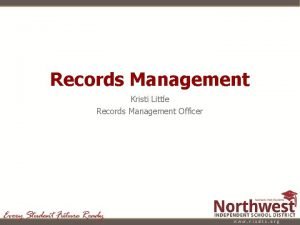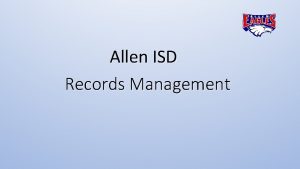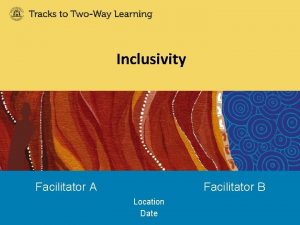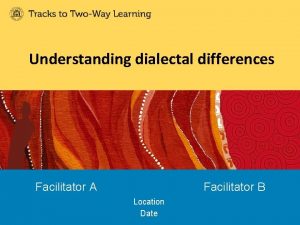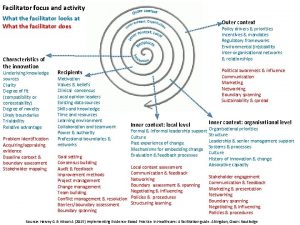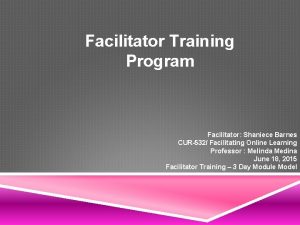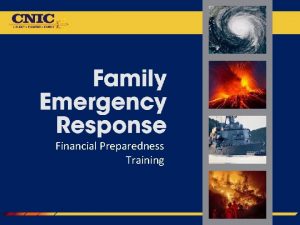Serf Serverside Educational Records Facilitator What Is Serf





































- Slides: 37

Serf® Server-side Educational Records Facilitator

What Is Serf? Invented in 1997, Serf is a self-paced multimedia learning environment that enables students to navigate a syllabus, access instructional resources, communicate, and submit assignments over the Web. Instructors create courses without having to know HTML.

Logging On

Viewing the Course

Student Control Panel

Instructor Options

Editing a Serf Syllabus

Textual Content (adds text to the current cluster) Class title (starts a new class cluster) Generic title (starts a new generic cluster) Preamble title (starts a new preamble cluster) Multimedia graphic (adds content with a graphic icon and link) Multimedia movie (adds content with a movie icon and link) Multimedia sound (adds content with a sound icon and link) Multimedia Web site (adds content with a Web site icon and link) Observational assignment Web portfolio assignment Web query assignment Submit file assignment True/false question Multiple choice question Fill-in-the-blank question Image map question Short answer question Slider question (Likert scale) Examination (launches a test) Strand (launches a tutorial module) Diagnostic (launches a self-assessment) Survey (administers a questionnaire) Control panel (creates a customized control panel) Menu bar (replaces or augments the current Serf menu bar) Banner (replaces or augments the current banner) Trailer (replaces or augments the current trailer) Kinds of Syllabus Events

Creating an Event

Editor Viewer

Navigating via the Index

Editing the Calendar

Setting the Date

Jumpstarting the Calendar

Editing the Style

Rostering Students

Using the Gradebook

Assigning Grades

Discussion Forums

Controlling Forum Access

Reading Forum Topics

Writing In a Forum

Serf 2. 0 Summer 1998 Version 2 added to Serf a testing system that can administer and grade objective test questions in a traditional exam style, or present competency-based tests according to Bloom’s mastery learning model.

Kinds of Test Questions True/False Multiple Choice Fill-in-the-Blank Image Map Short Answer Slider (Likert Scale)

Editing a Question

Editing a Pool

Editing a Module Practice vs Graded Weight of Module Criterion Repeats Reviews Deadlines Time frames

Editing a Section Relative weight Question pool Random or sequential Length Competency Origin Hide or see scores Time limit Allow skipping questions Allow changing answers Branching on condition

Serf 3. 0 Summer 1999 Version 3 added support for surveys, diagnostic assessments, and tutorials.

Creating a Diagnosis

Making a Diagnostic

Teaching in the Zone Helping All Students by Giving What They Need, When They Need It

Identifying the Zone Vygotsky defined the zone of proximal development as the difference between the difficulty level of a problem a student can cope with independently and the level that can be accomplished with help from others. Systems like Serf identify the zone and provide the help from others.

Throwing the Zone Away In traditional teaching, we throw the zone away. Students take tests, the results of which often are never handed back. Students hand in term papers at the end of a course with no chance to rewrite them. We are throwing the zone away.

Teaching in the Zone Constructivist teaching via the Web brings the student into the zone. The instructor becomes a coach who helps the student achieve goals. Time shifting makes the process efficient and manageable for student and teacher alike.

A Hypothesis The effectiveness of an online learning system is directly related to the degree in which it facilitates teaching in the zone. Methods I use to do this include: Giving the student another try Just-in-time discussion Customized scaffolding Gallery of other students’ work

Problem-based Learning The problem with problem-based learning is assessment. How do you assess what each student has contributed in a cooperative learning environment? Systems like Serf solve this problem by logging what each student contributes.
 Cruli
Cruli Administrative records with educational value
Administrative records with educational value Physics ucsd courses
Physics ucsd courses The serf by roy campbell
The serf by roy campbell Vassal serf
Vassal serf Ofo codes fasset
Ofo codes fasset [email protected]
[email protected] Akpsi anthem
Akpsi anthem Facilitator course distance learning
Facilitator course distance learning Miriam ferzli
Miriam ferzli How to thank a facilitator
How to thank a facilitator Mfibank
Mfibank Aggression replacement training facilitator training
Aggression replacement training facilitator training David keirsey
David keirsey Vmpi
Vmpi Family law facilitator
Family law facilitator Facilitator's name
Facilitator's name Business facilitation program visa
Business facilitation program visa Focus group facilitator
Focus group facilitator Facilitator
Facilitator How to thank a training facilitator
How to thank a training facilitator Thank you to facilitator
Thank you to facilitator Thank you note to training facilitator
Thank you note to training facilitator Slar facilitator report
Slar facilitator report Thank you for your facilitation
Thank you for your facilitation Family facilitator manual utah
Family facilitator manual utah Attributes of a facilitator
Attributes of a facilitator Nami facilitator training
Nami facilitator training Prepare/enrich facilitator manual
Prepare/enrich facilitator manual Facilitátor feladatai
Facilitátor feladatai Peer facilitator quotes
Peer facilitator quotes Entrepreneurship facilitator services
Entrepreneurship facilitator services Fgd protocol
Fgd protocol Design sprint facilitator
Design sprint facilitator Teacher as a delegator
Teacher as a delegator Schwartz rounds facilitator training
Schwartz rounds facilitator training Thank you facilitator
Thank you facilitator Panel facilitator
Panel facilitator
